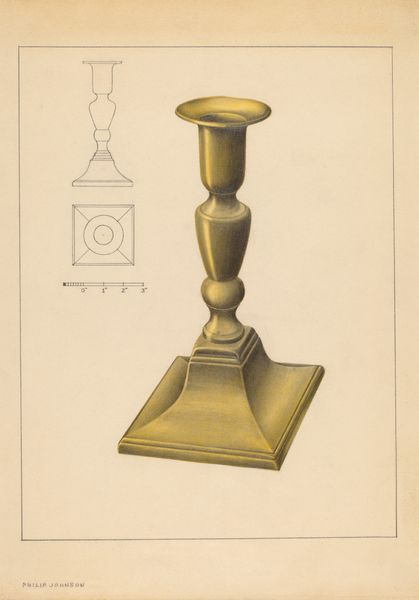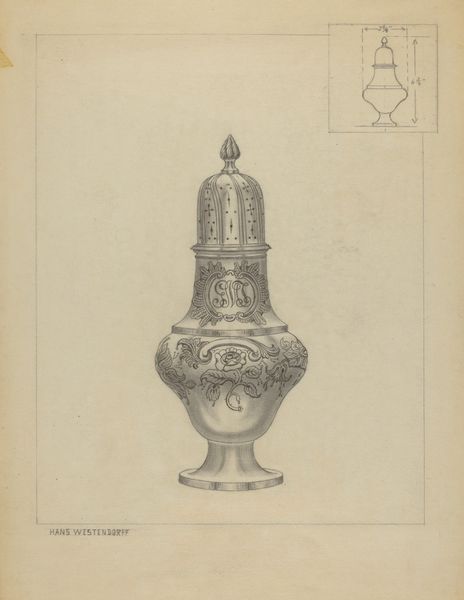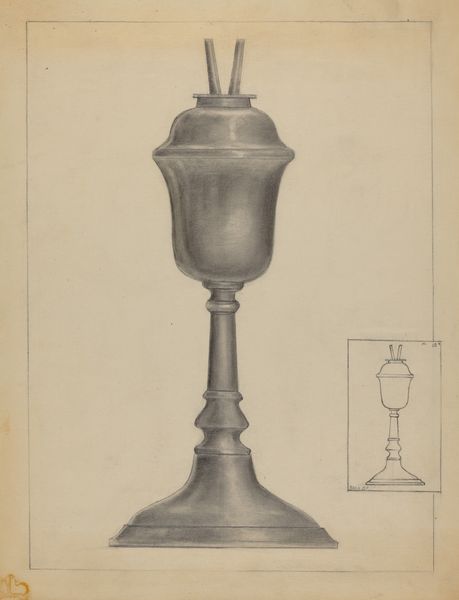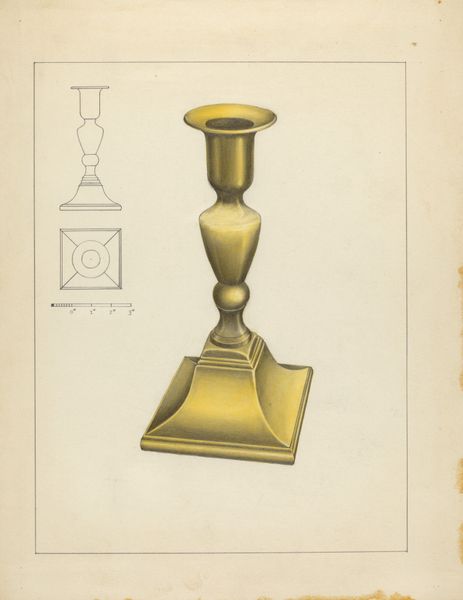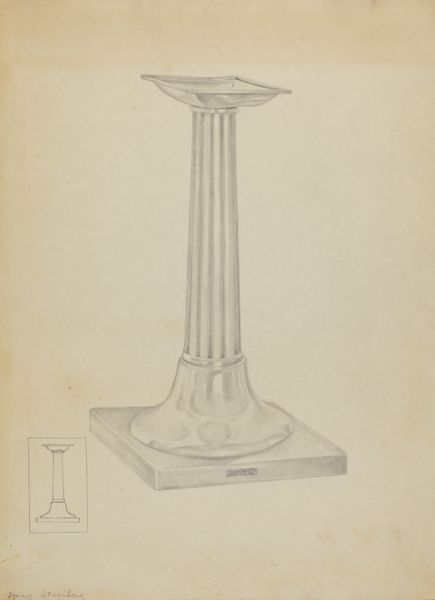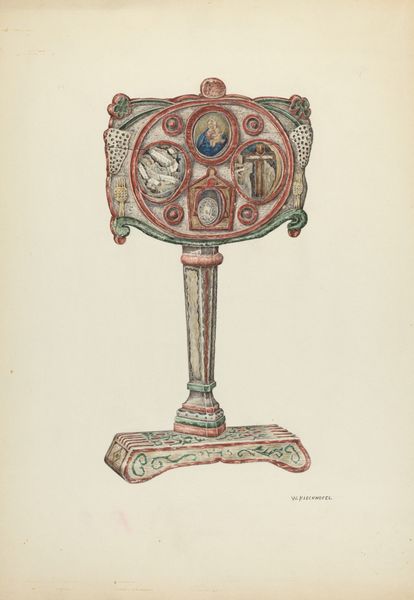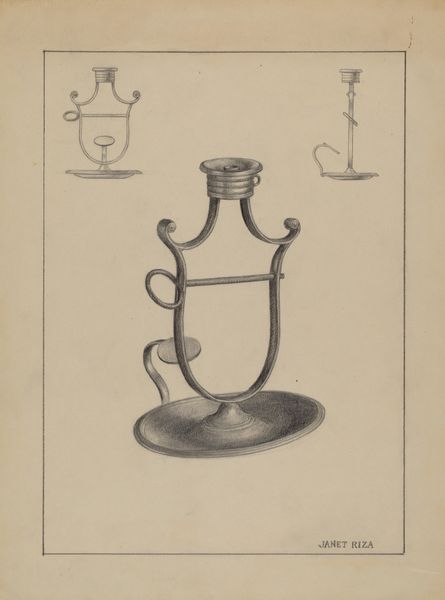
drawing, pencil
#
pencil drawn
#
drawing
#
geometric
#
pencil
#
academic-art
Dimensions: overall: 30.5 x 22.9 cm (12 x 9 in.) Original IAD Object: 8" high; 5" wide
Copyright: National Gallery of Art: CC0 1.0
Curator: Here we have Michael Fenga's "Silver Snuffer Stand," a pencil drawing created around 1936. What are your initial thoughts on this piece? Editor: Austere, certainly. The cool grey tones and precise rendering create a sense of formality, even detachment. The meticulous hatching gives the imagined silver surface a subtle gleam. Curator: The snuffer stand, particularly its geometric design and structured planes, reveals a fascinating dialogue between form and function. Notice how each section builds upon the last, creating a hierarchical visual structure. Editor: Ah, yes, the hierarchy is quite overt. The base adorned with a dragon gives way to the globular body, culminating in that imposing box featuring a double-headed eagle. Each band, a symbol layered atop another. What do you make of these symbolic choices? Curator: Dragons and eagles frequently denote strength, power, perhaps even imperial ambitions. Their placement here is strategic; one might even interpret the stand as a visual manifestation of dominance, each element building on the iconography of the last. The artist presents us with visual ideas regarding cultural permanence. Editor: The contrast between the mythical beast at the base, steeped in folklore, and the classical eagle motif is fascinating. This juxtaposition pulls in references from various epochs to imbue the piece with authority. I’d suggest this speaks volumes about continuity through cultural memory. Curator: Continuity and adaptation is palpable throughout the form, creating new artistic perspectives by combining visual traditions. It exemplifies how design can transcend mere functionality, communicating ideologies, or even narratives of historical evolution through materiality alone. Editor: I find the study as a whole a thought-provoking demonstration of art as a vessel for historical motifs, as we have decoded in the design a tangible presence through the application of iconography. Curator: It’s through that very juxtaposition of traditional and modern forms we arrive at its significance as an artwork – beyond representation, into an aesthetic examination of objecthood.
Comments
No comments
Be the first to comment and join the conversation on the ultimate creative platform.

